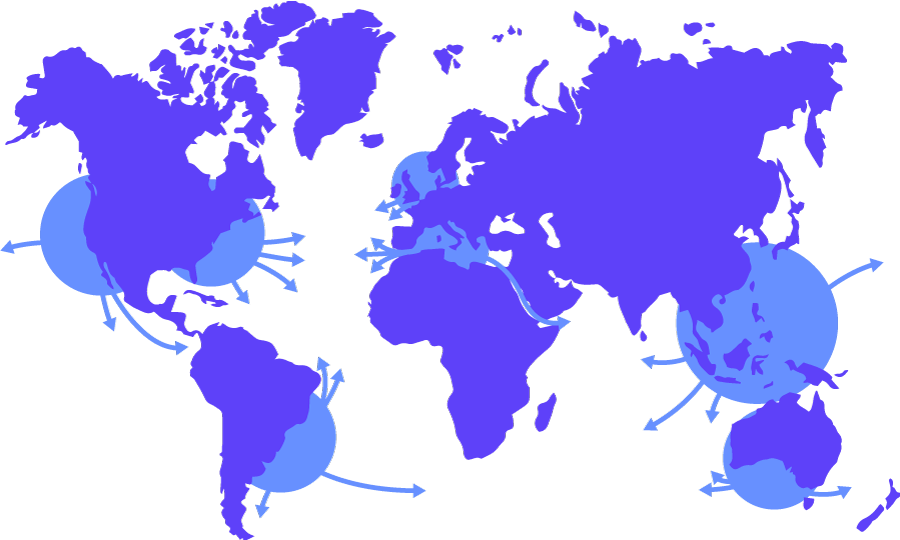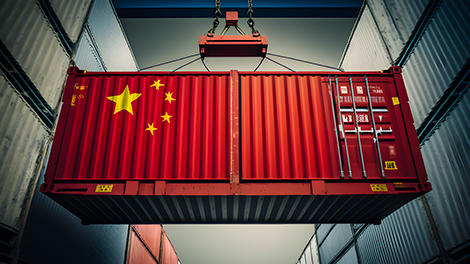Sea freight is comfortably the most common transport option for shippers in international freight. Total freight moving through UK ports in Q2 of 2024 alone totalled 108 million tonnes, the overwhelming majority of which is sea freight. These are figures replicated the world over. It’s estimated that 80% of world goods move by ship. So that's approximately 4/5 things you own.
It’s not surprising, as it's the cheapest option for long haul international movements. The very biggest ships can transport over 24,000 TEU of goods at once. That means the costs, and emissions, per tonne of cargo are low.
However, there is potential for ships to slow down further in the years ahead. The IMO's 2023 Strategy on Reduction of GHG Emissions from Ships, sets the framework for reducing the emissions over the coming years. A key part of that is reducing carbon intensity, which the IMO wants to see cut 40% by 2030.
Now, the quickest and cheapest way to achieve with existing ships this is by slowing down. According to studies, a 10% drop in cruising speed takes emissions down by 30%.
So, with all these factors, how long does sea freight take?
In this article we will look at all the different aspects of international ocean shipping and estimate how long you can expect the whole processes to take.
Speed of sea freight breakdown
What is sea freight's transit time?
Most people asking, ‘how long does sea freight take?’ are meaning ‘how long is the transit time?’. Sea freight can take anything between 10-55 days, depending on the departure and arrival port of your goods.
Let’s look at the average ocean freight transit times on some of the main routes:
- East Asia - Europe: 30 days
- East Asia - North America East Coast: 25 days
- East Asia - North America West Coast: 15 days
- North America East Coast - Europe: 18 days
- North America West Coast - Europe: 45 days
- Europe - Australia: 50 days
Obviously, there are many factors at play to determine exact transit time, those are just averages for direct services on some specific routes. We’ve covered how long sea freight takes on many more routes below:
How long sea freight takes... (approximately)

North and South European export routes
|
North Europe 15 days to NA East Coast |
South Europe 18 days to NA East Coast |
|
Please note, with the ongoing Red Sea diversion, transit times between Europe and Asia are dramatically increased to nearer 50 days.
North and South American export routes
|
North America West Coast 25 days to South East Asia |
North America East Coast 15 days to North Europe |
South America East Coast 21 days to NA East Coast |
South East Asian and Australian export routes
|
South East Asia 23 days to West Australia |
Western Australia 23 days to South East Asia |
|
These can act as a rough guide, but there are many other factors which affect the speed of ocean freight, which we will explore now.
How fast do sea freight vessels go?
On 11th August 2022, we analysed the data for over 50 cargo ships on Vessel Finder, positioned right across the world. The average speed was 14.2 knots, which is roughly 16mph or 26kph. No vessel was slower than 7.9 knots and 19.8 knots was the highest speed we recorded. That’s a range of 9.1mph/14.9kph to 22.8mph/36.7kph.
Obviously, this was just an average reading at a moment in time. Many factors can influence the speed, including weather conditions, location, traffic and type of vessel.
Ultra large container vessels (those with a teu capacity of over 14501) are said to average 16.48 knots, which is about 19mph.
People are often surprised how slow cargo vessels are. But with an average weight of 100,000 tonnes, they take some shifting! Furthermore, as mentioned in the introduction, they might be about to get slower, with new carbon emissions regulation continually arriving. It's well known that the quickest fix to make ships that little bit more fuel efficient is to slow down.
How long does port clearance take?
A vital part of the sea freight time equation is how long it takes a container to be processed by a port. The transit time is one thing, but once docked it needs to be unloaded from the vessel and presumably placed on a lorry for final distribution.
So, how long does clearing the port quay take? That can depend on if your shipment is LCL or FCL
Unloading a vessel which has up to 24,000 TEU takes 1-3 business days. There are also documentation and customs requirements which need to be completed by the port. But for FCL (Full Container Load) shipments, your container should be ready 4-5 days after your day of arrival.
For LCL (Less-than Container Load) shipments, it is slightly more logistically complex, as containers often need to be transported off the quay to a separate warehouse for deconsolidation. After that process, which takes a further 3-5 days, they are ready for pick-up.
Extra considerations
If only ocean freight was that simple. Sadly, there are many extra considerations you’ll need to make when calculating how long it will take.
Firstly, the other elements of the transport. It’s extremely unlikely that sea freight will be the only transport required to get your goods from their place of departure to arrival. Road or rail haulage is likely to be involved too and that will need to be factored into the total transit time. Perhaps some warehouse storage for a few days could be required too, depending on your facilities.
It’s also important to note that ocean freight is subject to an endless number of possible delays.
Port congestion, meaning vessels are waiting to unload can have a significant impact on the time it takes to get your goods through the quay. The 2021 supply chain crunch saw huge delays experienced on the US West Coast, where the average wait time outside the port for a vessel was of 8.7 days.
Weather can also have a big impact at any stage of transit. Storms and high winds can slow down ships, cause diversions and make port activity unsafe, forcing them to shut now and again. Always build a fair amount of mitigation for disruption into your supply chain.
Then there can be totally unexpected miscellaneous delays. Just look at the ongoing Red Sea diversion, which started in 2024, causing almost all container cargo to avoid the Suez Canal. Also, remember the Suez Canal blockage early in 2021? Huge numbers of ships were delayed or diverted as a result.
Whether you’re shipping FCL or LCL can also factor. As touched on before, extra time needs to be factored in for packing and unpacking the container. It also means there are more customs forms and the risk that if one item needs to be held back, they are all delayed.

Is China still the world's import hub?
This latest in-depth research report evaluates China's status as the world's import hub; examining the economic and political changes which could inspire businesses to look elsewhere.
Tips for minimising time taken by ocean freight
Planning
Take time to consider several possible shipping routes. Assess the strengths and weaknesses of multiple ports near the final destination. Opting for a direct service for example, rather than deferred service via several ports, cuts several days off the transit time.
Assessing all the options available is how to find efficiencies and increase the speed of transit.
Supply chain expert consultancy
Getting specialist help on the matter could be the answer, cutting your costs and time taken enormously. As with experts in any area, they're able to find efficiencies and educate you on cost savings you might not see.
At WTA we have supply chain experts specialising in individual trade lanes throughout the company. Reach out to our expert Liam Launders below for advice on minimising your logistics' lead time.
Quieter times of the year
Like with any industry, there are annual peaks and troughs.
Delays are often amplified in the peak season, which is typically July to October for sea freight, as retailers look to build inventory in time for Christmas. It’s this time of year that the ocean freight transit of your goods will take the longest.
Conversely, March time is the annual lull. Just after the Chinese New Year, volumes tend to dip. If you’re able to be flexible, prioritising this time of year gives you the best change of lowering transit time.
Visibility
End-to-end visibility tools are rapidly becoming the standard in international logistics. Showing where your shipment is at all times and being a single source for all the information related to it. ETA’s, consignee, Incoterms, documentation, you name it, they are stored in visibility tools.
Consider asking your freight forwarder about the availability of a shipment geolocation tool. Reputable ones should be able to offer it as standard.
So, the speed of sea freight can vary hugely depending on a number of factors. It certainly isn’t the quickest way to get goods around the globe. That would be air freight. But it is by far the cheapest and most popular. Utilised effectively it is the best way to maximise your profit margins.
If you feel it is the option for your shipments, explore the first-class service we offer at WTA. We have supply chain experts dotted across the world who can customise a solution for your unique needs. With an industry-leading visibility tool working alongside to provide unbeatable insight. Read about our sea freight service below:
If you’d like to learn more about shipping sea freight, explore our 9 tips for getting goods delivered on time and at the right price:











